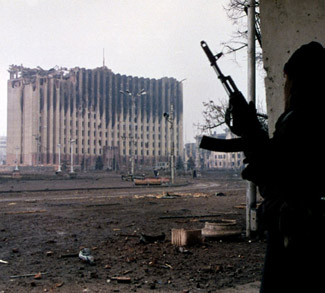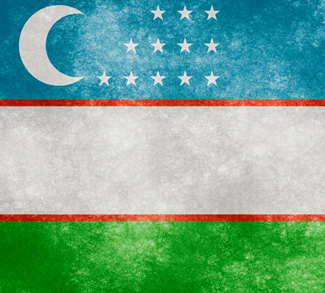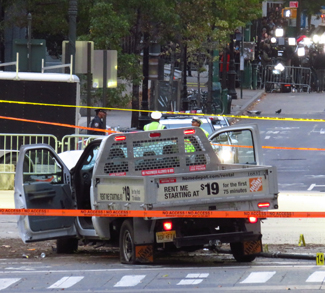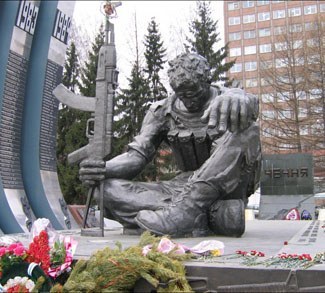The roots of North Caucasian militancy run deep, as the people of this region have been struggling against Russian control of their territory for centuries. Early resistance involved a broad mix of ethnic groups, sometimes coalescing, and in other instances, fighting independently. Russia eventually consolidated control however, and for quite some time was able to supress unrest. With the collapse of the Soviet Union, militant resistance re-emerged in the form of nationalist-secessionist movements, with Chechnya as the epicenter. Over time, the insurgency evolved into an Islamic insurgency with a fundamentally different goal: the creation of a pan-Caucasian Islamic polity. This transformation was accompanied by a concurrent shift in insurgent demographics, as an increasing number of foreign fighters joined their ranks. While not unrecognizable, the North Caucasian insurgency has changed significantly over time. What follows is a brief examination of its history and evolution.
Earliest Russian Control
As of 1725, Russia claimed control of the North Caucasus as far south as the line of the Terek River, which runs through northern Dagestan, Chechnya, North Ossetia, and Kabardino-Balkaria. Bearing in mind the territoriality within many North Caucasian cultures, there was likely an ongoing low-level conflict occurring during this period. In the early 1800s, the Romanov Tsars attempted to expand in the North Caucasus. In doing so, they encountered fierce resistance, led by an ethnic Avar religious leader, Imam Shamil. His force, consisting of a mix of North Caucasian tribes, caused considerable difficulties for the Russians, who were unable to bring the area under their control until approximately 1858. Thus, from early on, resistance to Russian domination was truly a pan-Caucasian effort, though this did not necessarily entail inter-ethnic cooperation.
Russian control of the area lapsed at the downfall of the Romanovs during the First World War. A brief independence was enjoyed in the region until the Bolshevik communists, having consolidated control in the Russian core, re-established control of the North Caucasus through the liberal application of military force. Such methods continued under the leadership of Joseph Stalin. Towards the end of the Second World War, Stalin ordered the deportation of the entire Chechen population in the winter of 1943-44. This was carried out for the Chechens’ alleged collaboration with the Nazis. Thousands perished on their way to exile in central and eastern Russia. The Chechens were allowed to return to their homes by Nikita Khrushchev a short time after the conclusion of the war. The heavy hand with which the Russians ruled the North Caucasus effectively repressed militancy in the region for a time. When Caucasian militancy re-emerged, it was, at least initially, a largely Chechen affair.
Post-Soviet Collapse
The collapse of the Soviet Union in 1991 saw several long-simmering independence movements surface in the North Caucasus republics. These nascent movements were largely motivated by ethnic nationalism that had reached its peak as the Soviet state disintegrated. The most significant movement was that of the Chechens. In late 1991, Chechen President, Dzhokhar Dudayev, declared independence after winning the presidential election. Chechnya soon adopted a constitution defining it as an independent secular state. The Chechens, and many of the other North Caucasian secessionists, hoped this would be their seminal moment; the culmination of a centuries-long struggle for the right to political and military control of the North Caucasus.
But Russia would not, and indeed could not, give up so easily.
Having witnessed the rapid disintegration of their geopolitical buffer zone between 1989 and 1991, the Russians were desperate not to allow the North Caucasus, an area Russia considers to be part of its core, to break from their political control. The Caucasus mountain range represents a defensible line against any potential foreign aggression from the south. The area immediately to the north of these mountains, including Chechnya, is a major transit corridor for Caspian Sea oil exports to Europe via the Russian port of Novorossiysk on the Black Sea. The collapse of its extended buffer zone had already demonstrated Russian weakness on the international stage. Corralling Chechnya was not just a way to reassert its power and prestige, but a strategic imperative. Initial Russian attempts to put down the rebellion by proxy involved the arming of the pro-Russian opposition in Chechnya. When this failed, the Russian army was deployed to Chechnya on 11 December 1994.
The First Chechen War
Thus began the predominantly Chechen phase of the insurgency in the North Caucasus (the Chechen insurgents were more than likely joined by like-minded fighters from the neighboring North Caucasian republics). At the outset, the insurgency was a nationalist-secessionist one (though it would not always remain so). On a strategic level, the insurgents were very astute. They understood that a major factor in their ultimate success had to be popular support, and they undertook a multifaceted campaign that effectively targeted this support. The insurgents provoked indiscriminate Russian reprisal attacks against civilian targets by operating close to hospitals and schools, as well as beheading captured Russian soldiers (techniques all too familiar to observers of several conflicts today). They also conducted an effective Information Operations (IO) campaign, using mobile jammers and broadcasting equipment, to counter the Russian narrative of the conflict. Conversely, the Russians prosecuted an essentially coercive strategy that was ineffective at garnering popular support.
Operationally, the Chechen defense was centered on large urban centers such as Grozny. In these areas, the Chechens engaged in a hybrid style of guerrilla warfare, proving to the Russians (and the world) their methodological flexibility. The Chechens fought pitched battles against massed Russian formations in urban areas, often lasting months.
On a tactical level, they created almost no strong points, instead seeking to maximize their mobility and make creative use of the urban terrain as a force equalizer. Examples of this include the insurgent’s use of urban verticality to launch attacks from above and below the angles at which Russian armour could effectively return fire. They also made use of the canalizing effects of the dense urban core to effectively trap whole columns of Russian armour by disabling the lead and rear vehicles. The Chechens were also able to conduct certain deception operations based on the communications difficulties created by urban verticality and electromagnetic ‘noise’ present in the urban environment, such as inserting false messages into Russian tactical communications, thereby creating tactical advantages for the insurgents. Chechen tactics were characterized by swarming attacks that were largely ad hoc affairs, wherein multiple groups of insurgents opportunistically coalesced from several different directions to attack a Russian formation. These groups would then break contact and disperse in multiple directions, often leaving the Russians at a loss as to where they came from and who to pursue.
Despite the Chechen approach to the conflict, the Russians pursued a conventional strategy that was essentially based on Second World War doctrine. It involved the massing of forces, moving in a linear fashion, with an emphasis on the occupation of urban centers such as Grozny. Initially, this was inadequate to deal with the insurgents. Preceded by a three week bombardment by air and military forces, the 131st “Maikop” Brigade, composed of 1000 soldiers, 26 tanks, and 120 armored vehicles was tasked to penetrate to Grozny’s city center. This unit entered the downtown core of Grozny in column formation, and was reduced to approximately a fifth of its size in three days. Despite staggering losses such as this, the Russians continued to prosecute their conventional strategy.
For a variety of reasons, not the least of which was a serious lack of munitions, the Chechens were gradually pushed out of the urban centers in the northern lowlands, and forced to fall back into the southern mountains. At this time, the insurgents changed tactics and carried out several high-profile terrorist attacks, including those on 14 June 1995 at Budennovsk (Stavropol Krai) and January 1996 at Kizlyar-Pervomaiskoye (Dagestan). Both incidents resulted in a significant loss of Russian lives (mainly civilians) and further loss of face for the Russian government. The Budennovsk incident alone resulted in approximately 150 deaths and 400 casualties, when Russian troops attempted to rescue the hostages taken by the insurgents. This delivered a severe psychological blow to the Russian public, who began to question the necessity of the conflict. Ironically, it was the Chechen leader Shamil Basayev who planned and conducted many of these high profile attacks. Basayev was part of a large group of North Caucasian militants who had been trained and equipped by the Russian government, and sent to assist Abkhaz insurgents fend off the Georgians in that conflict during the early 1990s.
Over the course of the next year, fighting continued between the two sides, largely limited to ambushes and small skirmishes, centered in villages in the southern mountain passes. In August 1996, the insurgents launched a successful counterattack against Russian forces in Grozny, retaking the city. This led to the Khasavyurt Accord, a cease-fire between the two sides. A formal peace agreement was signed in May 1997, which saw Chechnya remain a part of the Russian Federation. While the agreement brought an end to hostilities, it did not resolve the question of Chechen independence, which both sides agreed to determine in five years. Somehow, small groups of decentralized North Caucasian insurgents had fought the much vaunted Russian military to a standstill. For the Russian government, who had previously appeared determined to crush the “criminals” and “bandits”, this was a stunning reversal.
The Interwar Years: A Swing towards Fundamentalism
The interim peace was transformative for both parties to the conflict, but particularly so for the insurgents. For the Russians, defeat was an unacceptable end, and so the Khasavyurt Accord was never more than an opportunity to reorganize and rearm. For the insurgents, a new faction of Islamic fundamentalists emerged at this time, which began to challenge the nationalist faction for control of the broader insurgent agenda. Their primary goal was to establish a fundamentalist Islamic state in Chechnya, and subsequently, the rest of the Caucasus. Their first major move occurred in early 1999, when they pressured Aslan Mashkadov, the leader of the Chechen republic at the time, to declare that Shari’ah law was to be phased in over the next three years.
In a regional context, Islamic fundamentalists, or to be more specific, Salafists, had been present in the North Caucasus for some time. Neighboring Dagestan had experienced clashes between Sufi and Salafist Muslims as early as 1994-1995, and in 1998 Salafists had attempted a coup in the capital Makhachkala. That same year, Dagestani Salafists declared the creation of a “Special Islamic Territory” in Botlikh, Andi, and Gagatli, three villages in the south-west of the Republic.
These events help to highlight an important pre-existing split within Islam in the North Caucasus. When Islam first penetrated the Caucasus, it was of the Sufi variety. Sufism has a long history in the region and has, during the course of this history, incorporated regional traditions and is essentially entrenched in the region. Salafism has also been present in the region; however, it arrived much later, and was not as widely embraced by the many peoples of the Caucasus. Salafists have tried to invoke a “pure” version of Islam, free from local traditions. Salafism appealed to some, especially the younger generation that sought an answer to the moral and social crisis that emerged after the disintegration of the Communist state. Prior to the conflict, to be a Salafist did not mean to be a radical. Indeed, this holds true today. It was only in the lead up the conflict that a radical interpretation of Salafism emerged, making it a recent phenomenon in the North Caucasus. When it did, the Sufi led establishment in Dagestan and Chechnya resisted its spread, with both parties requesting Russian help in subduing their Salafist opponents in 1998 and 1999 respectively. This demonstrates the deep divide between Sufis and Salafists, not just between insurgent factions, but in the broader societal context.
Prior to this shift, the fortunes of the insurgency were in the ascendant. The emergence of this split in insurgent ranks had vital practical implications for Russian counterinsurgency efforts and marked the beginning of an important shift in insurgent demographics, and concurrently, the decline of the insurgency. It was at this point that the insurgency became an increasingly international affair. It also saw the dominance of the fundamentalist faction increase.
The Second Chechen War
Accounts vary over who made the first move but in August of 1999, a force of approximately 5,000 Chechens, under the command of Shamil Basayev, crossed the border into Dagestan’s newly declared “Special Islamic Territory,” in response to the deployment of Russian forces who had been sent in at the request of the government in Makhachkala. Although the insurgents were ultimately unsuccessful in their attempt to hold ground in the face of the Russian assault, this was a sizable deployment of combat power, demonstrating the growing significance of the Salafist group within the insurgency. Over time, Mashkadov’s submission over Shari’ah law, as well as the nationalist’s inability to prevent the fundamentalist faction from carrying out cross-border incursions into Dagestan, emboldened the fundamentalists, who increasingly demonstrated independence from the nationalist leadership’s command and control.
After driving the insurgents from Dagestan, the Russian military advanced into Chechnya in October of 1999. Encountering sporadic, light resistance, Russian forces quickly advanced on Grozny. In the previous conflict, the insurgents had begun their defense in Grozny, and as they fell back towards the south, defended successive cities along the way. This time however, as the Russians approached the outskirts of Grozny, all hell broke loose. The insurgents mounted an inspired defence of the Chechen capital and at the same time, throughout Chechnya, towns the Russians had passed through without incident, sprang up in rebellion as soon as the main Russian force was engaged in the capital. This revised operational strategy may be termed ‘concurrent cities.’ Tactically, the Chechens proved as astute as ever, making excellent use of urban verticality. This time, they went one step further however, by creating and making use of an extensive network of underground tunnels. Chechen tactics were again of the guerilla variety in that they conducted highly mobile, hit and run attacks. They rarely attempted to hold ground in the classic sense. Instead, they would blend back into the civilian population to wait for their next opportunity to attack. This left the Russians often unable to distinguish between subdued territory, and territory teeming with insurgents. The Russians, again, were using conventional tactics against an unconventional opponent. As with the first conflict, this was largely counterproductive in that it alienated the local population, thereby increasing both active and passive support for the insurgents. Despite significant difficulties however, the Russians were eventually able to achieve control of Chechnya.
When this happened, the insurgents dispersed to neighboring republics, as well as to the Pankisi Gorge in Georgia, a long time sanctuary for Chechen militants due to ethno-religious ties with the people of that area. Also at this time, observers noticed that the stated goals of the fundamentalists were changing. In 2002, the two sides argued over the potential declaration of Shari’ah law throughout the entire North Caucasus. This alteration of priorities by one faction highlighted the importance of the shift that was occurring, as well as their growing dominance in the insurgency. It is likely that prior to this, they had either hidden or downplayed their ultimate goals in the interest of cohesion with the nationalist faction.
The Ascent of Terrorism
This shift was accompanied by the increased acceptance and incorporation of terrorism as a tactical tool. Despite being greatly diminished in numbers due to their initial combat losses and the success of the Russian’s counterinsurgency (COIN) strategy, the insurgents proved themselves to be quite resilient by carrying out a variety of high-profile attacks including (but certainly not limited to) the “Nord-Ost” siege (Moscow, 2002), and the attack on the School #1 in Beslan (North Ossetia, 2004). The insurgents also successfully assassinated Akhmad Kadyrov, an ambitious Sufi ex-mufti (and ex-insurgent) who was the head of the Russian-backed administration in Chechnya. This occurred in a very public way during a Victory Day parade in Grozny’s Dynamo Stadium on 9 May 2004.
The ultimate aim of the fundamentalists’ ambitions became clear as then president of the Chechen shadow-government (most of who lived in exile), Doku Umarov, declared the creation of a Caucasian Emirate on 7 October 2007, with himself as Emir. The fundamentalist faction’s goals had evolved into something very similar to the trans-national strategy of Al-Qaida. The latter’s goal is to establish a global political system (Caliphate) based on a fundamentalist version of Islamic law, while the former’s was to create a regional Islamic polity (Emirate). This clashed directly with the goal of the nationalists and marked the final separation of the increasingly divergent factions. Lack of coordination between the two insurgent factions rendered the nationalists largely irrelevant, as they had little to no control over a significant portion of the military wing of the insurgency. This irrelevance had been growing for quite some time, as since 2004, all of the main anti-Russian statements have been made under the flag of radical Islam and not under the banner of Chechen nationalism. Without this control, there was little incentive for the Russians to engage with the nationalists. It did however, come at a cost to the fundamentalists, as it reduced their domestic recruitment base due to the increasing alienation of the nationalist Sufis. The division also terminated the fundamentalist’s connection to a political entity (the nationalist shadow government) that the international community might have viewed as legitimate. At this point, the insurgency had officially been transformed into one of the fundamentalist Islamic variety.
As mentioned previously, the early 2000s saw the increasing internationalization of the insurgency in the North Caucasus. The relative lack of internal and external support for the fundamentalists had caused this faction to look for outside help as it rose to dominance. Its declaration of an Islamic polity in the North Caucasus helped in this respect. Past claims as to the number of foreign fighters vary greatly. While some have put the number at 300, the Russian government claimed that at one point, there were approximately 700 foreign fighters in the North Caucasus. Documents reported to have been found in Grozny list nationals from Sudan, Nigeria, Niger, Ivory Coast, Jordan, Syria, and Pakistan as present in the ranks of the insurgents. Somewhat surprisingly, two insurgents from China were reportedly captured in the battle for Komsomolskoye, demonstrating the far reach of insurgent recruitment efforts. In terms of finances, the US State Department has estimated that, at minimum, approximately $100 million has been channelled to Chechen fundamentalists from various sources in the Middle East. The Chechens have also received training in the West Bank, support from Islamists in East and Central Asia, and have gained experience fighting in Afghanistan and Iraq. This external support did little in the near-term to resurrect the fortunes of an insurgency that had been in decline for years. It did however, help to sustain it.
The Islamic State Connection
Currently, the North Caucasian insurgents are well connected to trans-national jihadi groups. The civil war in Syria has provided the insurgents with new opportunities for recruitment, training, and the chance to ally themselves with significant transnational jihadi groups such as the Al-Qaeda affiliated Al Nusra Front and the Islamic State (IS). It has been reported that they have made significant contributions in terms of fighters and financing to these groups. This is particularly true in the case of IS, in which Umar Shishani, a Chechen, is reported to be one of IS leader Abu Bakr al-Baghdadi’s closest associates. Shishani’s group, predominantly of North Caucasian descent, are reported to be quickly becoming one of the largest factions in IS. There has been a reduction in insurgent activity (though not a cessation) in the North Caucasus which is likely the result of this outflow of insurgent fighters and capital. It has also been noted that this has caused an internal debate amongst the North Caucasian insurgents, over whether they should be participating in the Syrian/Iraqi conflict, or fighting for the creation of the Caucasian Emirate at home. Many have left to fight in the Middle East however, as their strategic agenda is aligned with the jihadi rebels there. Furthermore, the environment in Syria (and now Iraq) is much more accommodating. In the North Caucasus, the Russians and their proxies are firmly in control at the moment, making any sort of major operation or training difficult. Whereas in Syria and Iraq, the North Caucasians have had a chance to hone their combat skills, as well as acquire sophisticated new political and economic skillsets, notably from Islamic State. In several recent press releases, members of IS, some of which are thought to be North Caucasian, have promised to return home and put these to use. If and when they do, they will do so as more capable and battle-hardened than ever before.




